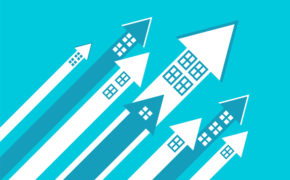Demystifying the Difference Between FHA and Conventional Mortgage Insurance
If you’re interested in a conventional mortgage or FHA mortgage loan that requires little to no money down, you’ll probably hear the term private mortgage insurance (PMI) tossed around by lenders. While it’s a common term used in the mortgage industry, it’s one that can be misleading, and is often accompanied by many misconceptions.
I’ve had customers who thought PMI would double their monthly mortgage payment, and others who thought it would automatically disappear after one year, regardless of the status of their mortgage. I’ve also had clients who thought it was an extra fee that could be waived, and others who thought PMI is a requirement for every mortgage loan. However, these assumptions aren’t entirely accurate in explaining what private mortgage insurance is and how it works.
Similar to how property insurance protects homeowners against damage done to their home, private mortgage insurance protects lenders from the risk of a borrower defaulting on their loan. Only applicable in situations when homebuyers have a down payment of less than 20%, PMI allows lenders to extend finance options to borrowers in exchange for adding the cost of mortgage insurance to their monthly payments.
The cost of PMI is usually insignificant, depreciates with time and often goes away completely. However, there are some differences in how private mortgage insurance works between conventional mortgage loans and FHA loans.
While PMI should not be the primary factor for determining which type of mortgage loan you choose to finance your home, understanding the basic differences can help you understand what you are paying for.
When it comes to paying PMI, the first thing to consider is the differences in upfront costs associated with conventional and FHA mortgages.
While conventional loans do not charge an upfront fee for private mortgage insurance, FHA mortgages have a required upfront cost of 1.75%. This means that 1.75% of the value of your home will be paid in the form of an upfront fee in order to finance the home.
Although this may sound like a lot, it’s really not that much in the grand scheme of things. For every $100,000 you borrow, it costs $1,750—roughly $4.80 per month over 30 years.
The second thing to consider is the annual percentage component. In each situation, you will pay a percentage of your loan in PMI for the duration in which you have private mortgage insurance. For conventional loans, this typically ranges from 0.5% to 1% of the original loan amount, whereas the cost for FHA loans ranges from 1.3% to 1.35% on 15-year and 30-year mortgages.
Once your home has at least 22% equity (meaning you owe less than 78% of what your home was purchased for), conventional PMI usually goes away automatically. Furthermore, once you have 20% equity in your conventional loan, you can refinance (often at little or no cost) out of the loan and avoid paying PMI all together. However, private mortgage insurance for FHA loans typically does not go away in most situations.
If you have less than 20% to put down on a home, don’t worry. There are a wide-variety of low down payment loan programs that can help you get into your dream home. And, while mortgage insurance is typically required for these types of programs, there are ways you can avoid paying PMI.
If you’re interested in learning more about how you can get into your dream home with little to no money down, leave a comment below, or call me at (248) 658-2643.










